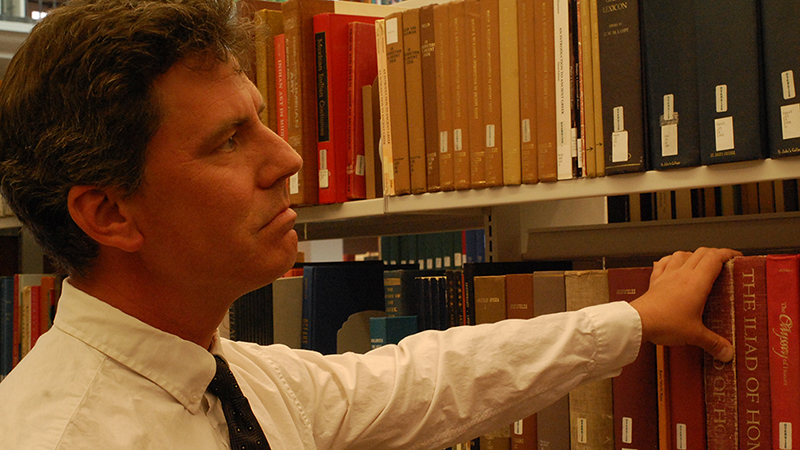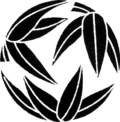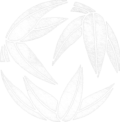
Publications Edited
- Antiochian.org (official website of the Antiochian Archdiocese of North America)
- The Word (monthly print magazine)
- Again (quarterly print magazine)
- The Handmaiden (quarterly print magazine)
- MyOCN.net (official website of the Orthodox Christian Network)
- Greek Orthodox Archdiocese of America CANA curriculum (lesson plans for high school aged students)
- Channing Bete Publishing Company, numerous publications (health, safety, and wellness educational publishers)
- New Jersey Goodlife (monthly print magazine)
Selection of Published Works
Complete information coming soon!
Information on Reference Style Guides
MLA Handbook, 8th edition
APA Style, 7th edition
Chicago Manual of Style, 17th edition
General information and resources regarding style guides.
Complete information coming soon!
Publication Highlights
Over the course of my career as a writer and editor, I have written countless articles for print and online publications. In just my ten years as Director of Online Communications for the Antiochian Archdiocese of North America, I developed over 25,000 pages of new content. Following is a partial list of articles that are particularly memorable, or refer to larger projects.
Antiochian Archdiocese Official Website, Feb. 2015
The Archdiocese unveiled a new website design for www.antiochian.org on February 1, 2015, as part of a series of planned major improvements to her online ministry. The improvements introduced with the launch of the new design represent the cumulative work of a multi-year project of the Archdiocese Department of Internet Ministry.
Work on a new visual presentation for the website began in earnest in late 2012, under the leadership of His Eminence Metropolitan Philip of blessed memory. After a pause with his repose and the past eventful year in the life of the Archdiocese, the design has been concluded under the leadership of His Eminence Metropolitan Joseph, and the hierarchical overseer of the department, His Grace Bishop Nicholas.
The Archdiocese website has been in continual operation for twenty years, and since 2008 has been the primary responsibility of the Department of Internet Ministry. The website is one of the most popular English-language Orthodox Christian resources available, with an audience that has grown to 100,000 unique visitors each month, resulting in over a quarter million monthly pageviews. Included on the site are over 20,000 distinct pages, and extensive collections of graphics and documents.
The core team at the Department of Internet Ministry has been in place since 2008, and consists of director Douglas Cramer, and editors Virginia Nieuwsma and Andrew Frishman. Technical support has been provided since 2013 by SNP Technologies of Hamden, Connecticut, and their project lead Michael Brooks. Graphic design concepts and consulting for the new design were provided by Fr. Joel Wilson (OCA) of Rolla Creative of Rolla, Missouri.
The Word Magazine, July 2014
In late June, an historic event took place in the life of the Church of Antioch: the first Antiochian Unity Conference, called by His Beatitude John X, Patriarch of Antioch and All the East, to gather together representatives of the Patriarchate from across the globe. The conference was held in Balamand, Lebanon, from June 25 to 29, and concluded on the Feast of Saints Peter and Paul with a massive outdoor Patriarchal Liturgy on the grounds of Balamand University, attended by faithful from across the region as well as those gathered for the Conference.
This gathering occurred during a momentous time for our ancient Patriarchate of Antioch. A strong and ascendant Patriarch, John X, in the early stages of his leadership, guides the Church with love and joy in the Holy Spirit, while the Church carries a heavy cross: the historic homeland of the Patriarchate in Syria suffers war and the constant threat of violence, and the Church in Lebanon struggles with the burdens of life on the doorstep of war. The discussions of the conference were informed by the presence in spirit of the brother of Patriarch John, His Eminence Metropolitan Paul of Aleppo, abducted during the conflict over a year ago, along with Syriac Metropolitan Yohanna of Aleppo. …
Our North American Archdiocese was well represented at the conference, including an official delegation of nine members, as well as other attending hierarchs and invited clergy and laity. Over twenty people in total were present from the Archdiocese. The official delegation included Archpriests Thomas Zain and Timothy Ferguson, representing the clergy; Fawaz El-Khoury and Daniel Braun, for the Board of Trustees; Daniel Abraham, for the Order of St. Ignatius; Violet Robbat, for the Antiochian Women; Khalil Samara, for the Fellowship of St. John; Jordan Kurzum, for SOYO; and Douglas Cramer, for the Department of Internet Ministry.
Antiochian Archdiocese Official Website, Aug. 2013
The Department of Internet Ministry serves the online communications needs of the Antiochian Archdiocese. The department’s team works to share the wisdom and expertise that exists across the workers and ministries of our Archdiocese, by sharing their stories and vital resources with the more than 60,000 monthly visitors to our website.
Drupal Software Platform
The primary software the department uses every day is Drupal. It is from a category of web publishing software called open-source content management systems, or CMS. The leading CMS today is WordPress, which is used to run blogs and small-to-medium websites. Drupal is a more powerful CMS that can be used to build and run websites small and large, and is used by a wide range of high profile organizations. For example, the current website of the White House is built and run with Drupal. Drupal is installed in our server environment, and allows us to create and edit website content and perform a wide range of administrative and design tasks, without needing to do any coding. We use a web-based interface; when one of our team is logged in to the website, we are presented with additional menus and interfaces to work on the site right in our browsers.
Drupal consists of core software, and then what it refers to as user-contributed modules. Modules expand Drupal’s core functionality, and are developed and maintained by the Drupal community of developers and made available through Drupal.org. For example, we run a module that allows us to provide Google map locations for parishes in our parish directory. Our current configuration consists of core Drupal and about 100 contributed modules, and a handful of custom-coded modules we wrote ourselves.
Leadership made the decision to use Drupal before the creation of the department, and over the years we’ve all learned a lot about the toolset. Drupal has a reputation for having a steep learning curve, but with training has proven a very effective publishing tool. The department has invested in ongoing training, which has helped the team keep pace with its rapid growth. Our technical consultant, Michael Brooks, is primarily focused on Drupal development work for his clients. While we remain aware of other technologies and toolsets in the industry, specialization in Drupal continues to be a strong long-term investment for our department and the entire organization.
Hosting and Server Configuration
Our website depends on a server environment called a “LAMP stack”: a software configuration of Linux (operating system), Apache (web services software), MySQL (database software), and PHP (programming language). This is the root software running in a data center server environment, provided by our web hosting company. Our web hosting is currently provided by NST, as part of their overall services for us. We’re in the process of migrating to a web host named Acquia, a company that specializes in hosting complex enterprise-level websites built on our Drupal software platform, particularly for non-profit organizations. We’re working towards being fully migrated to the new host this summer.
Antiochian Archdiocese Official Website, May 2008
Citizen Journalism
At the July Clergy Symposium at Antiochian Village, I’ll be leading some sessions for our pastors on Ministry and the Internet, and want to dip in to my session notes for an idea worth highlighting here. Just today, I saw a blog post commemorating the 15 year anniversary of the Internet as we know it—technically, the anniversary of public domain web code. Yet in only 15 years, this communications technology has swept the globe, and become a necessity rather than a luxury for any organization with a message to share. Not to sound patronizing, but it really is O.K. if you find the Web intimidating or confusing. So do I, a lot of the time. So does most everyone.
Yet it is critical that we work to use the Web well, because it is fast becoming the most important method of public conversation in our society, particularly for those without a lot of money to spend. I’ve heard it said that much of the Internet is a collective exercise in citizen’s journalism, and it’s a useful metaphor for our efforts as an Archdiocese. We at the Department of Internet Ministry are the publisher, and you are our “stringers”, in newspaper jargon—the writers, recorders and photographers who provide us with the source material for us to publish on Antiochian.org. This is the model that we’re working to incorporate, one where we create and maintain a conduit or platform for your messages.
We are creating and maintaining a range of resources, such as daily Scripture readings, articles about our faith, and a special section on His Eminence Metropolitan PHILIP. We are also continually updating our homepage at Antiochian.org, selecting the best content from a range of sources—the publications of our Archdiocese, messages from our bishops, the ministries of our departments and of SCOBA—so that any visitor to our site will have a choice of interesting and timely material to enjoy.
This reflection is adapted from a speech originally written for Fr. Christopher Metropulos of St. Demetrios Greek Orthodox Cathedral of Ft. Lauderdale, FL, and the Orthodox Christian Network in July 2007.
Summer is almost here. It’s a good time to just take a deep breath, and relax. You know, go to the beach if you live close to it, have a barbeque, invite some friends over. I remember doing this on a grand scale as a child growing up in New Jersey. But how often do most of us do this anymore? We’re so busy, we’ve forgotten that true rest and relaxation, the kind that really restores you, is vital to our survival.
This week the Church celebrates the Ascension of our Lord, and our worship since Pascha has been rooted in our joy in the Resurrection. In the light of this glorious, peaceful and fulfilling period of the calendar of our Church we should be totally relaxed and fully in the presence of our Lord. But we still struggle to relax and unclench, to be at peace.
Why? In part, because we live our lives in a kind of emotional and spiritual shallows. We’re so busy, we don’t pause to reflect, to listen, to understand our motivations. We are busy for busyness’s sake. We allow others to set our timetable. We often aren’t aware of the reasons we have for doing what we do. We all act a little crazy sometimes, bustling about with all our tasks and projects and responsibilities. It’s important for us to act. But it’s just as important for us to relax, to quietly find our center, to understand what’s driving us to do what we do, to make sure that our choices and actions flow from our deepest values.
This reflection is adapted from a speech originally written for Fr. Christopher Metropulos of St. Demetrios Greek Orthodox Cathedral of Ft. Lauderdale, FL, and the Orthodox Christian Network in June 2006.
There comes in each of our lives a point when we confront the reality of death. Often, it comes with the death of a loved one, something which can be even more difficult to accept than our own coming death. This is something that mankind has wrestled with since the earliest of days. It is the hinge of our greatest stories.
In the Iliad, the great Greek warrior Achilles must overcome his rage at the death of his dear friend Patroclus, a friend whose death he helped bring about, and accept mortality. In the Psalms, King David struggles to understand his role in bringing about the death of Uriah, the husband of Bathsheba, and death itself.
Many philosophies and religions throughout time have taught that we must accept that death is the natural companion of life. But nothing could be further from the truth.
This is one of the most radical claims of Christianity. It is scandalous. Only in Christianity do we find a denial of death’s inevitability. In our post-Christian age, it is common for people to speak of how we must “accept” death. Of how we must “come to terms” with the death of a loved one.
No. What we must do is accept life. We must affirm life so radically that we deny death itself. We must not “come to terms” with the death of a beloved. We must “come to terms” with their everlasting life.
This article originally appeared in Again Magazine Vol. 26 No. 1, Mar. 2003
The Dachau concentration camp was opened in 1933 in a former gunpowder factory. The first prisoners interred there were political opponents of Adolf Hitler, who had become German chancellor that same year. During the twelve years of the camp’s existence, over 200,000 prisoners were brought there. The majority of prisoners at Dachau were Christians, including Protestant, Roman Catholic, and Orthodox clergy and lay people.
Countless prisoners died at Dachau, and hundreds were forced to participate in the cruel medical experiments conducted by Dr. Sigmund Rascher. When prisoners arrived at the camp they were beaten, insulted, shorn of their hair, and had all their belongings taken from them. The SS guards could kill whenever they thought it was appropriate. Punishments included being hung on hooks for hours, high enough that heels did not touch the ground; being stretched on trestles; being whipped with soaked leather whips; and being placed in solitary confinement for days on end in rooms too small to lie down in.
The abuse of the prisoners reached its end in the spring of 1945. The events of that Holy Week were later recorded by one of the prisoners, Gleb Rahr. Rahr grew up in Latvia and fled with his family to Nazi Germany when the Russians invaded. He was arrested by the Gestapo because of his membership in an organization that opposed both fascism and communism. Originally imprisoned in Buchenwald, he was transported to Dachau near the end of the war.

